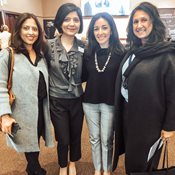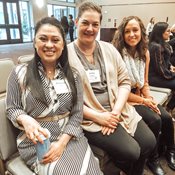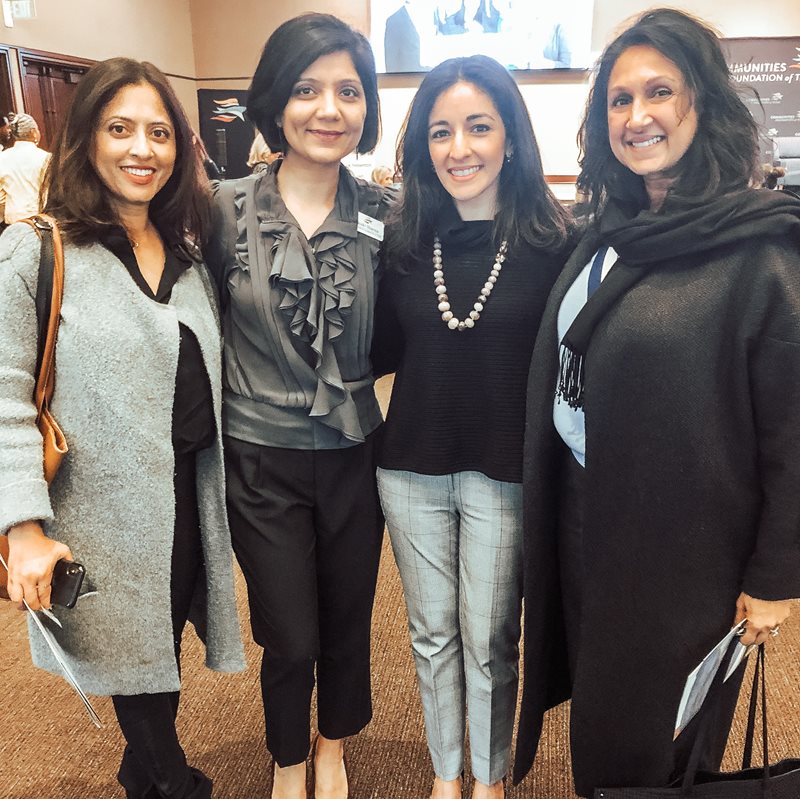We believe in taking care of businesses, especially those that take care of their communities. CFT for Business (CFT4B) provides the expertise and resources to help clients develop a company culture of good corporate citizenship.
For twenty years, we have been working with clients to align their community engagement with their business goals. We partner with businesses to develop and execute a wide range of community engagement efforts and provide a platform for learning and networking amongst these good corporate citizens.
Moderated by CFT’s own Sejal Desai, Business Engagement Director, CFT4B, the panel included three executive directors from a range of nonprofits in size, geography and sector focus. Panelists included: Janet Madrazo, SciTech Discovery Center, Stacey Malcolmson, Senior Source, Byron Sanders, Big Thought.




Key Takeaways:
- Nonprofits should be a lab for societal issues. It’s important to help identify problems that can be solved and go after root causes. Nonprofits should not just be institutions for charity. The Board should play a key role in understanding the root causes and social issues related to the organization’s mission and not just serve as a fundraiser.
- It’s important for a nonprofit to design a strategic plan that offers opportunities for board members to build ‘quality relationships’ with donors and prospects and a community for advocacy, fundraising & stewardship.
- Individuals interested in engaging with nonprofits can consider participating in nonprofit task forces. This is a good way for you and the organization to build a working relationship before engaging on a Board.
- Diversity is important from a representation perspective, however, being proximate or creating proximity to the issue is just as important.
- Intentionality with your Board is important. Understanding why you were brought on the Board and the value you can bring with specific deliverables is key.
At the start of our conversation, the panelists were asked what they would change about how their board of directors operates. Byron Sanders candidly responded by redefining how we view nonprofit and philanthropic work.
“The biggest thing I would change is the board’s understanding of what it is supposed to do. Historically, nonprofits are considered an institution for charity. But that’s not actually what we do. In my opinion, nonprofit and philanthropic work is the lab for societal issues. It’s the R&D for how we’re supposed to be shifting society, so that philanthropists and nonprofits are no longer needed. If you have a board that understands this concept, they also understand that their work is more than just fundraising; it’s about bringing skills and assets that can advance the vision and mission in addition to bringing perspectives that will better inform our collective effort to that end.”
Janet Madrazo echoed Byron’s thoughts by expanding on the misconception that a board member’s primary goal is to raise money:
“My job is to teach our board members that this is not simply about asking for money. By the time you’re ready to talk to someone about giving your organization money, you’re so far into relationship with them. They know your family and you know theirs. No one is usually shocked by the proposal; they anticipate it’s coming. If your job is just asking for money, that’s transactional. And we are not transactional. We are relational. Your board members must spend time in relationship with others before making a financial ask. What’s more, they need to be passionate about the work they’re doing.”
Both Byron and Janet pointed to the overall importance of designing a strategic plan that offers a board member the opportunity to build quality relationships with donors/prospective donors and the community. It’s not enough to put bodies in a seat if there’s no real plan for how each member will contribute.
“You have to do your homework first as an organization and know what you need. What gaps do you have? Knowing your gaps helps you develop a strategic plan. Once you’ve identified your needs, you bring them to the governance committee”, Byron said.
Additionally, Bryon shared his love and appreciation for nonprofit partnerships with task forces, because they help nonprofits accomplish specific and targeted goals during an outlined timeframe.
The discussion surrounding board expectations and a relationship-focused understanding of the organization’s main priorities led us to addressing two things: 1) why it’s critically important to be intentional when recruiting board members and 2) to communicate intentionally to each board member why they were recruited to serve. Lack of clarity can be problematic for any nonprofit and the board member themselves. Understanding why they were chosen to serve along with knowing the value they bring is paramount to a thriving board of directors. This understanding empowers board members to go beyond their give/get responsibilities.
Attendees also heard our panelists address the importance of proximity as it relates to diversity and certain issues. Representation is important and necessary but isn’t enough in most cases. Panelists noted that this is the most challenging part of running a nonprofit. It’s knowing that you need board members who can raise money, which means they have networks and exist in certain places and spaces. Conversely, it’s also knowing that your work happens in specific communities. It’s in hoods. It’s knowing that there is a natural disconnect – based on how our structures and society exist – between recruiting someone for diverse representation vs proximity to social issues. The main question you should be asking yourself is how you bring diversity AND proximity to your board.
Stacey Malcolmson said that “partnering with individuals who understand elements of diversity more than you might be helpful in creating proximity and building relationships with the individuals most impacted by your work. If you are unsure of how to address a certain issue, connect with someone who might be able to help you understand it better.”
The event ended with a Q & A segment. Attendees had the opportunity to highlight some of their own concerns about developing a thriving board and how to identify whether they’re serving on the right board of directors based on their skill set. CFT For Business also shared ways in which nonprofits could submit their Board requests to CFT.
Did you miss our live event? You’re in luck! You can watch our LiveStream by clicking the button below.

